Housing is the most complex of the three fundamental needs of human existence: food, clothing and shelter. In the present context, shelter no longer means just a shell to shield man from the vagaries of nature. Nowadays the term shelter has been replaced with the term ‘housing’, which is a complex issue. The issues of concern for consideration with housing are comfort, convenience, commuting and connectivity. Besides the physical functions, housing is a tool of socioeconomic exuberance, a means for social security, a mode of expression, a reflection of the quality of living, an instrument of speculative gain and an avenue for investment. In the general context it is a sector for employment and an indicator of development.
Housing became an issue of concern due to the impact of industrialisation. Cities were transformed from the abode of the elite and privileged to places for the labour pool to live. Industrialisation moved people to settle in urban centres, which posed the question of availability; at the same time the industrial economy dispensed the money in the hand of the common man to enhance his affordability. Finally with industrialisation the role of cities became to supply steady labour.
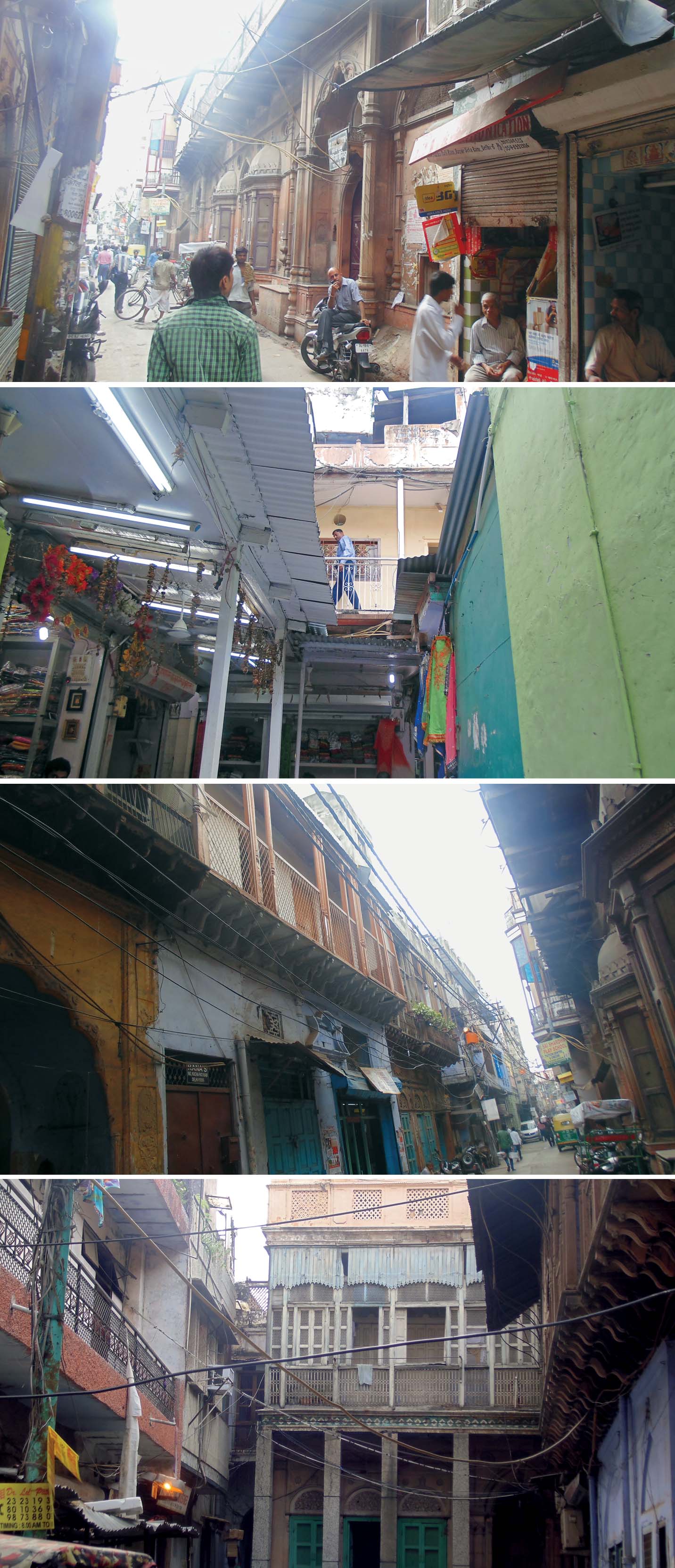
Top second: Housing above shops and work places
Top third: Feudal Housing
Top forth: Re-adaption of Feudal Housing
Prior to industrialisation the majority of people used to live in rural settlements, with improvised or self-help housing, while cities were abodes for feudal lords, which in India meant the zamindars, tallukedars, kings and people serving them. With the emergence of the Mercantile Economy a class of nomad traders was born. A section of that trader class settled in towns. The cities also took over the role of hubs of trading. With the cities turning into markets, the artisans and craftsmen started concentrating in and around them. To accommodate traders a new housing typology emerged where ground floors were used for trading and upper floors were used as dwellings. In Delhi, this typology of housing was identified as Katra or Kucha. Katras were gated precincts, while Kuchas were alleys or narrow lanes with housing over shops on both sides.
When the stride of industrialisation transformed the role of cities India was under Colonial Rule. In British India industrialisation started with a few cities like Mumbai (Bombay), Surat, Kanpur (Cawnpore) and Kolkata (Calcutta). The transformation of housing typology, or rather, housing morphology can be traced from these cities. The Feudal Housing was infused with Labour Housing, which was later refined and defined as Social Housing or Public Housing.
Besides the physical functions, housing is a tool of socioeconomic exuberance, a means for social security, a mode of expression
In Mumbai, Surat, Kanpur and Kolkata – the cities, which were ahead in the race for industrialisation – the issues for accommodating the industrial labourers, were managed with Cluster Housing that was referred to by different names in different cities. Like Chawl in Mumbai, Pole in Gujarat, Ahata in Kanpur and Bara/Bari in Kolkata. The thrust had been on sheltering maximum labourers with minimum investment on land and building. The natural typology that emerged was a common open land in the centre for social and collective needs with single or two-room tenements as private spaces on all the four sides of the central court. Central open land was used collectively by all for daily individual as well as social interactions and ceremonial celebrations. Generally latrines and baths were also centralised for common uses instead of having individual toilets.
The impact of industrialisation was absorbed and gradually cities stabilised by the end of the 19th century. The period prior to World War II in the 20th century also passed smoothly in terms of urban housing. The cities continued with low-density, low-rise morphology.
The mid-20th century, which was a very turbulent phase in global society, made a strong impact on the housing scenario. All the problems related to urban housing even today are rooted in that period. The first onslaught on urban housing was large-scale migration of people from Myanmar (Burma) as an impact of World War II. The cities, which were almost stable to accommodate its people, were suddenly faced with a situation of accommodating migrants due to advancing forces in Myanmar.
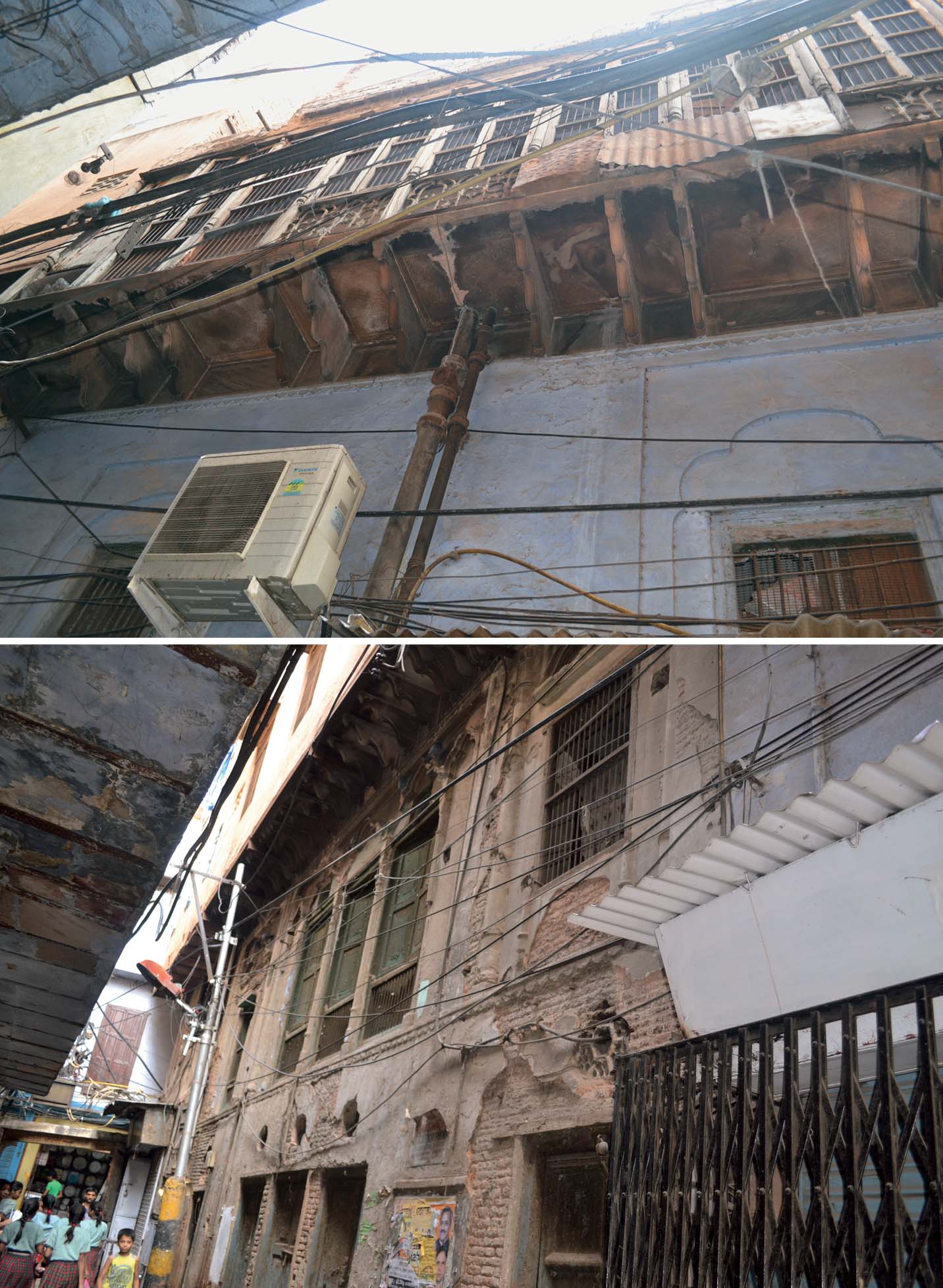
This was followed by the migration from Pakistan after the Partition of India. To cope with the situation all sort of measures were taken to accommodate every migrant in spite of all the constraints and limitations. The need for housing suddenly jumped and it was not possible to create new dwelling units overnight to meet the demand.
The attempt focussed on making the existing surplus building stock in cities available to needy migrants to settle down. To enforce this programme, Control of Rent & Eviction Ordinance was issued in 1946, which was converted into Rent Control Act in 1947. The temporary arrangement, which was made to cope with an emergency situation, continued for decades.
With the continuation of the Rent Control provisions, the owners virtually lost control of their buildings, and tenants had little interest in maintaining them. Consequently, the housing stock decayed and degenerated and new stock was not coming up as the owners lost control over their buildings. So they became reluctant to invest their savings in construction of new housing. The states were not in a position to invest in the construction of housing leading to the shortage of housing escalating.
The thrust had been on sheltering maximum labourers with minimum investment on land and building
World War II also accelerated the pace of technological advancement and industrial production. With the end of the War, the technologies and industrial production, which were developed to produce instruments of destruction, were re-channelised for creation of a new Industrial Civilisation.
On the other side, in post-Independence India, a lot of people started moving to urban centres with new hopes and aspirations and in search of better quality of life and employment opportunities. Besides industrial employment, the potential for employment in the service sector and aspirations for better education and health caused continuous migration to urban centres. Simultaneously, due to mechanisation, the agriculture sector started shedding labour in rural areas, which further accelerated migration from rural areas to urban areas. These multiple factors kept the demand for housing spiralling upwards.
The cities, which had turned into labour pools, became the epicentres for evolution of a new civilisation. Initially, the cities were faced with tremendous pressure in complementing the new eco-political order due to constraints of resources as well as knowledge for coping with new challenges. New hypotheses and thesis theories were coined and experimented with to plan and shape the cities.
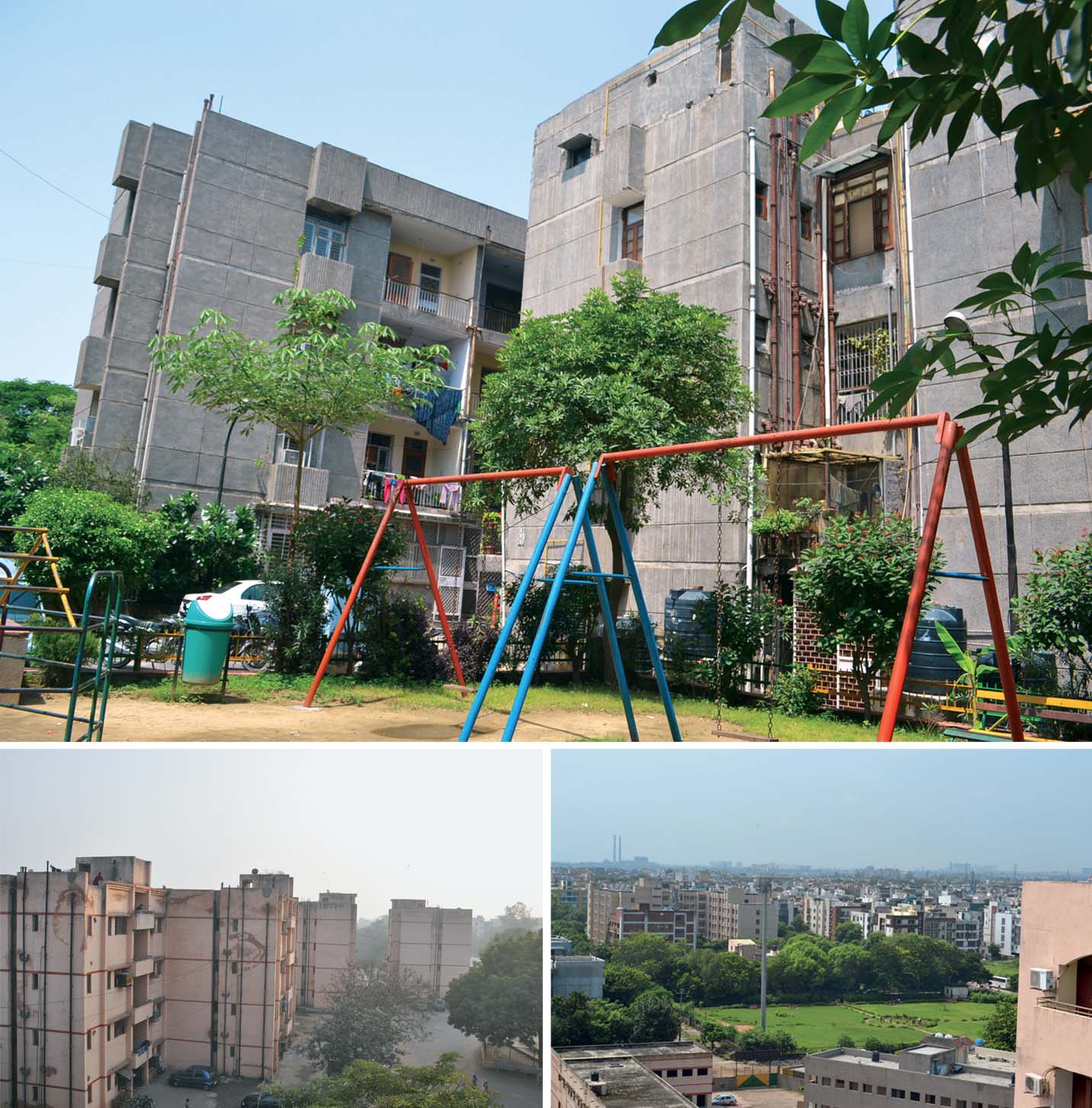
Bottom Left: Low Income Group Type Housing
Bottom Right: Middle & High Income Group Housing cluster
At that time two extremely diverse demographical situations prevailed in the West and the East. In the Western world the population had depleted and large urban stocks were available for redevelopment. In the Eastern world the population was growing, pressing for expansion of urban stock.
The Planning theories, which were coined to serve the needs of the Western World, were applied blindly in India. They were totally out of context and bound to fail. While the need was for expanding the Urban Stock, all through the seven decades the strategy has been to overstretch the existing urban stock resulting in multiplication of density beyond all threshold of sustenance on all parameters. The blindfolded race for densification has mutilated large urban centres. As a result, the basic needs for survival of mankind are unmanageable, the air is highly contaminated and water is polluted besides being highly insufficient to meet the needs of the people.
The pressure created with this out of context experimentation resulted in choking the opportunity of expanding the Housing Stock to meet the continuously growing demand. Ambitious Master Planning programmes were taken up, starting from Delhi, for all the cities with potential to grow. But the process was reduced to capitalise on the monopoly of Public Sector Undertakings (PSUs) dealing with housing. All the land within the city as well as the hinterland around the cities with remotest potential to grow were delineated and put under the domain of development authorities. This virtually banned the private operators who could have given competition to PSUs in the Housing Sector and stabilised the market forces.
The cities, which had turned into labour pools, became the epicentres for evolution of a new civilisation
Affordable housing cannot be taken up in isolation. Affordability goes hand in hand with availability; both are shadows of each other. They cannot be separated; they maintain the rhythm of a seesaw. When the affordability is on the low side, the availability is on the high side and when availability is on the low side the affordability is high. This imbalance keeps the scenario of
housing very dynamic to the extent of sometimes being turbulent.
When the shortage of housing piled up, it drew the attention of the government, which tried direct intervention to resolve the issue. Various Public Sector Undertakings were created for direct delivery of housing. Different state governments constituted Housing and Development Boards for the purpose. Development Authorities were also constituted and given the responsibility to operate in the housing sector to meet the demand for housing. The issue of Affordable Housing is primarily focused on Urban Housing, which is interlaced with urbanisation. Affordability and availability are followed by acceptability, which depends upon the accessibility to services for quality of life and commuting time to the work place.
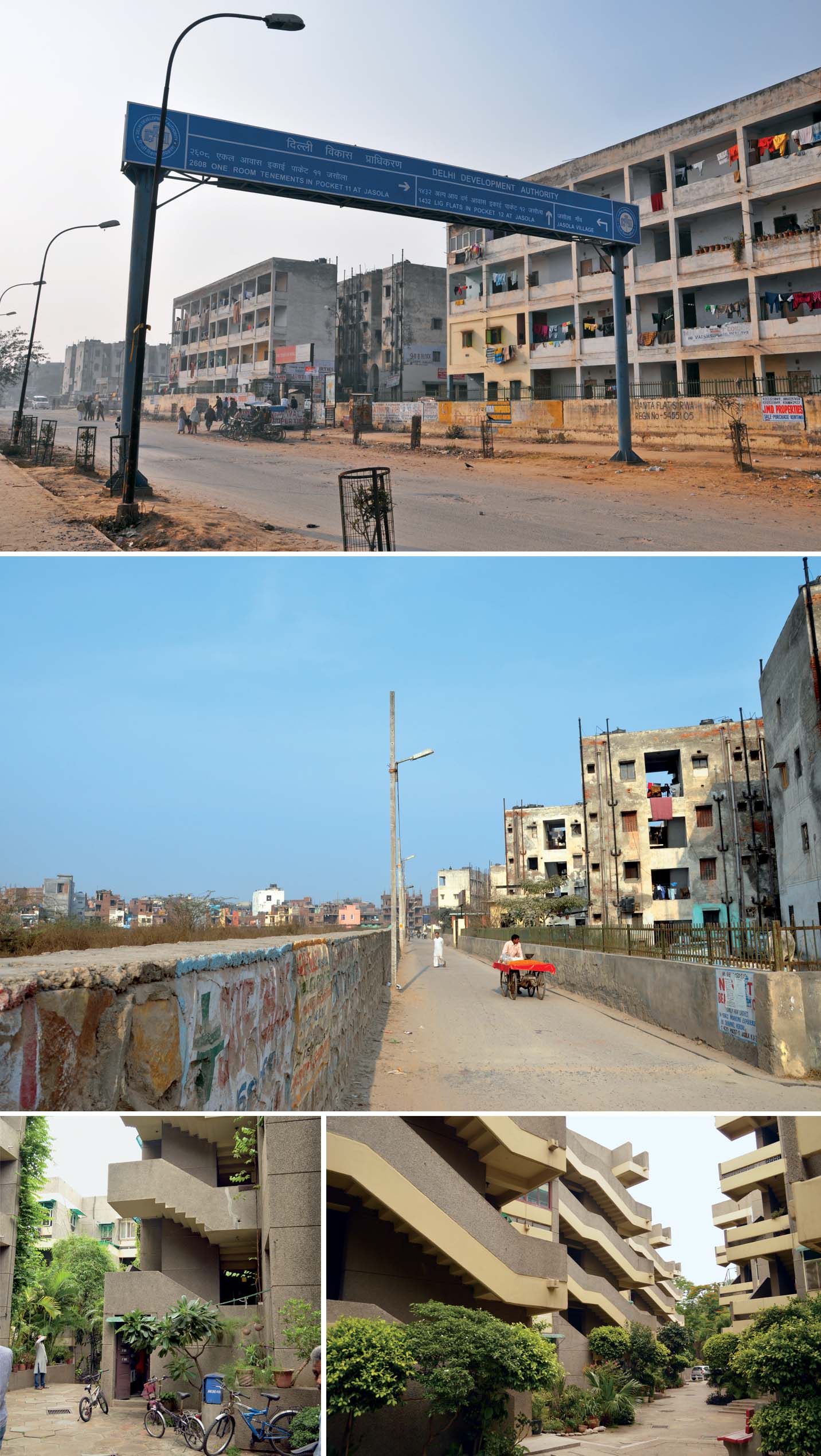
Bottom left & right: Cooperative Housing
Considering affordability as a prime criterion, Housing Boards developed a series of building typologies with categorisations such as, HIG (High Income Group), MIG (Middle Income Group) and LIG (Low Income Group). But due to various factors, the cost in housing was growing at a much faster pace than the growth in income of respective economic classes. Initially, as a response to this mismatch, further lower categories were added: EWS (Economically Weaker Section) and S&S (Site and Services). The economic mismatch in income and dwellings continued and to overcome the situation the sizes of dwellings got smaller. Eventually an HIG dwelling became the size of a LIG one.
In failing to manage affordability in the housing sector, attempts were made to cut the construction cost of dwellings and Low Cost Housing became a mirage. It was experimented with by PSUs by resorting to low cost materials as well as cheaper substitutes, which ultimately created poor quality construction. The reduction in the cost of construction drastically brought down the life of the dwellings.
Low Cost Housing received a lot of admiration, appreciation and awards, but before the party was over the buildings started decaying and needed perpetual repair. The hard-pressed common man felt cheated. Another approach to Low Cost Housing was propagated by NGOs, researchers and academicians. Their approach was to rationalise on material consumption through technical interventions, which were based on high intellectual inputs. The intellectual costs were never taken into account while projecting their construction. As a high degree of intelligence is required as input in construction it cannot be adopted for massive construction needs.
Another approach which was taken up by PSUs for meeting the affordability of housing was the delivery of semi-finished dwellings. The concept was to deliver the skeleton of a dwelling structure, which consumed around 40 per cent of the construction, and leave the finishing task for the buyer, which was around 60 per cent of the total cost.
The PSUs received immense autonomy from the government; they operated with absolute monopoly but moved at a snail’s pace. Consequently, the gap between demand and supply kept growing. The choked supply of housing stock provided ideal conditions for the exploitation of the common man in search of shelter.
Cooperative societies were also given a limited role to play in the housing sector under the regulative clutches of Housing Boards and Development Authorities. Some of them developed group housing projects but their contribution in the total housing pool is almost negligible.
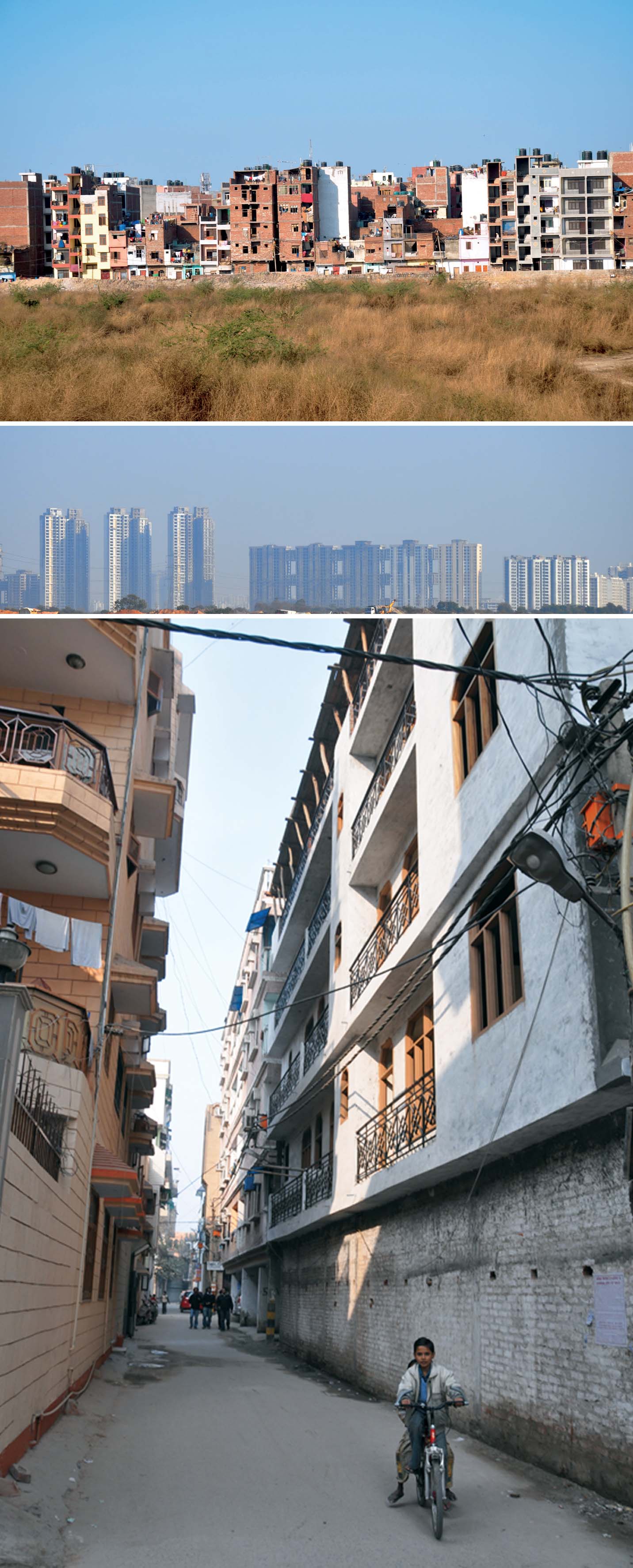
Middle: Corporate Housing
The 20th century passed with no solution to Affordable Housing. The backlog of housing and total mismanagement of affordability and availability of housing left the major cities engulfed with slums and encroachments. In most of the mega cities in India, 40 to 60 per cent of the people have been pushed to live in shanties and shelters in slums in inhuman or sub-human conditions. Another large section lives in unregulated/unplanned/unorganised colonies with bare minimum municipal services, which are often called illegal colonies.
With the changing global economic order, the private operators took over the Housing Sector reducing PSUs to marginal operators in the housing sector. The private corporates could mobilise a lot of investment from the common man. Corporates took over the role of lead players in the housing sector, and with liberalisation giving people plenty of surplus cash they started looking for avenues for investment, which they put into housing projects. Initially, they capitalised huge profits due to acute shortages of housing, which further motivated more and more people to buy houses but with no intention to occupy them.
Now it has reached a situation where hundreds of thousands of dwelling units are ready for occupation, but there is no one to live in them. The reasons are multiple: foremost
is that they are beyond the affordability limits of those who need them. Secondly, their distance from work places and the fact that affordable and accessible schools and healthcare facilities and services to meet day-to-day needs are not available.
The balloon of affordability may burst someday
The journey of housing from post-World War II to date can be put under four phases of transformation. The mid-20th century was marked with a sudden demand for housing in urban centres; the resources at that time were constrained to create new housing stock to meet the sudden demand. The thrust had been on optimising the utilisation of existing stocks with legislative interventions. The measures that were taken up to cope with emergency situations due to various pressures that gave immediate relief caused immense damage to the housing sector in the long run.
The second phase was a highly inspired era of Town Planning and over ambitious operations for direct delivery of housing stock to ease the availability of housing. The sole operators for this were the PSUs. The Town Planning process was out of context, which stagnated the growth of the housing sector and provided grounds for the PSUs to operate in a monopolistic manner. Consequently, the housing supply got clogged.
The third phase of the housing sector was need-driven, with the common man in search of housing getting trapped and exploited, succumbing to corruption simply to find a house within reach of his work place. The conditions forced mushrooming of slums and encroachment, explosion of unorganised settlements and people pushed to inhuman living conditions.
The fourth phase of housing is greed driven. The magnitude of housing shortages having a cascading pile up over half a century left a huge demand and the liberal economic order released plenty of surplus capital in the hands of the common man for investment. The corporate sector took command of the housing sector. They mobilised large-scale capital from the people booking dwellings in housing projects that were on paper. The large scale rush to book dwellings caused an escalation in the cost factor making the housing unaffordable for the end user. The major housing stock available in cities is in the hands of investors who are looking to make large profits by selling or renting them. So in the present situation the availability may be there but affordability is a farfetched dream.
The balloon of affordability may burst someday. Though the saturation may be close by, still investors are holding on to stocks waiting for higher returns. The rate of escalation in real stock has dipped in recent times. But again the issue of accessibility will come up, for which initiatives are present in the form of large-scale metro rails, monorails and other modes of commuting. Today, housing has become a commodity to trade, instead of being a facility to sustain human life.
All photos: Professor S. M. Akhtar

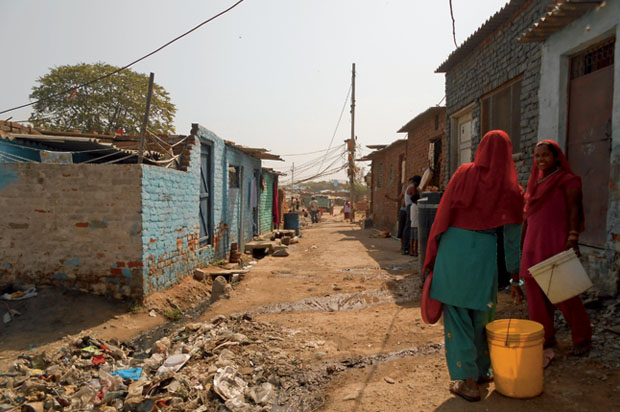

Comments (0)